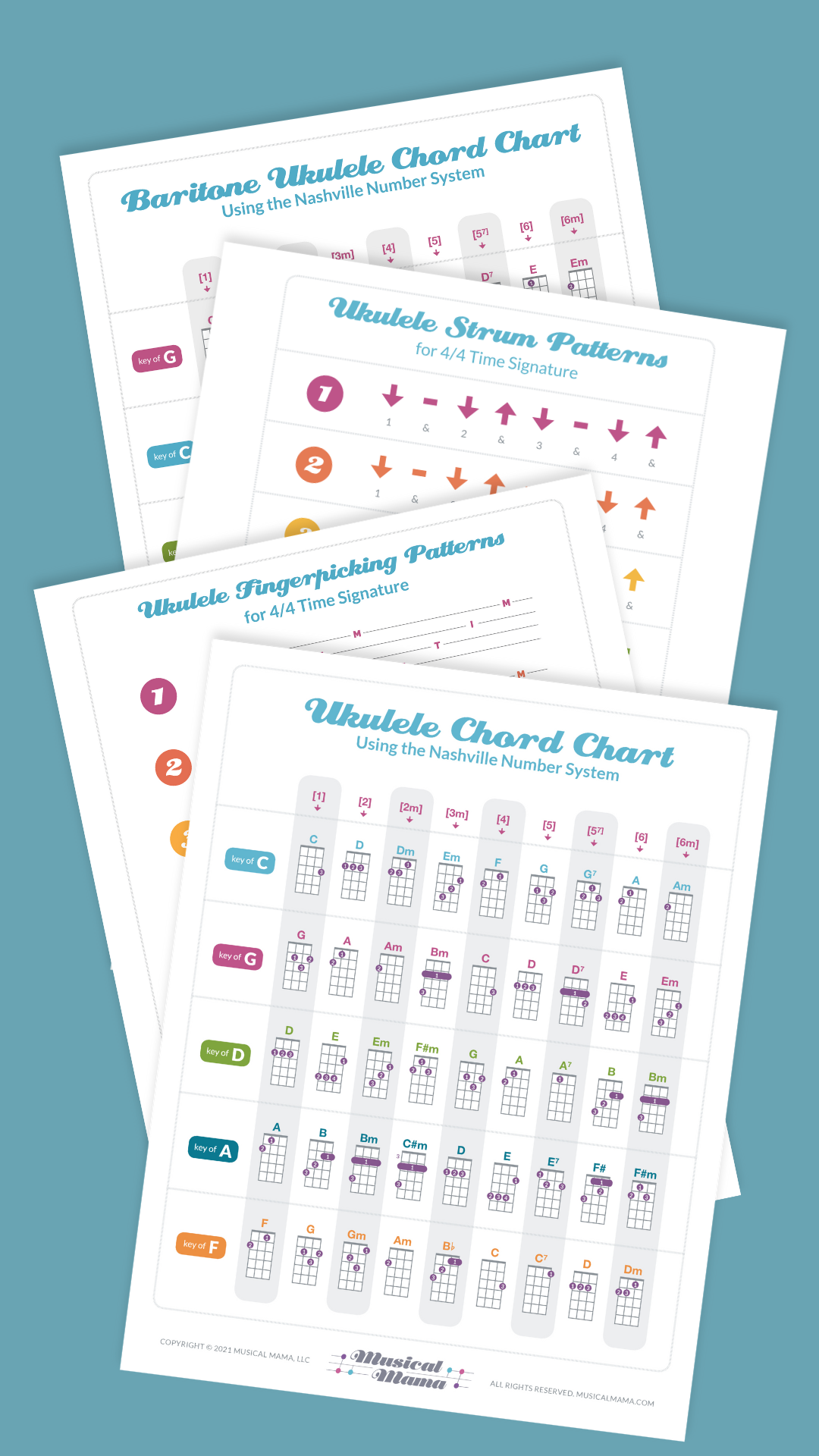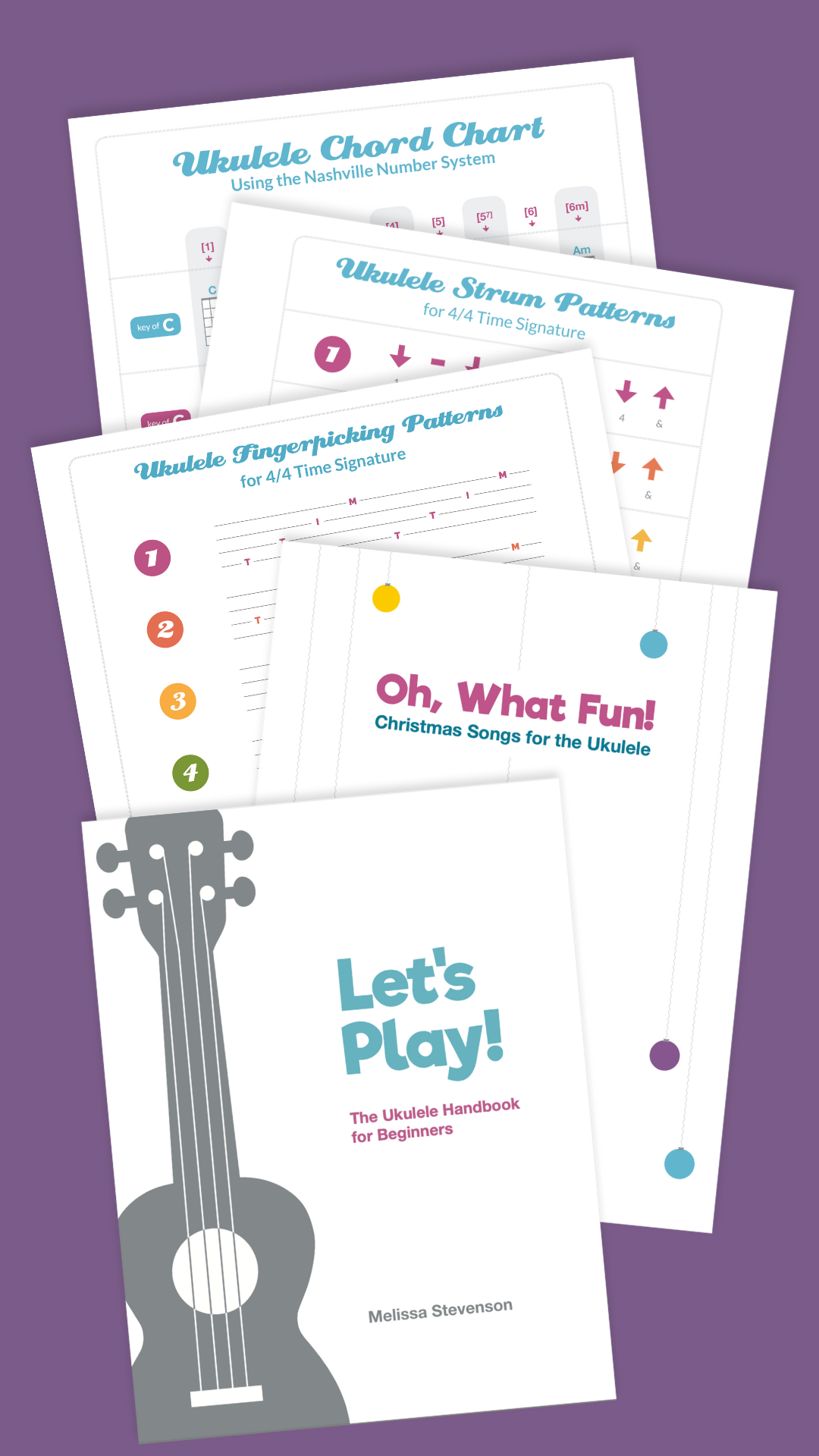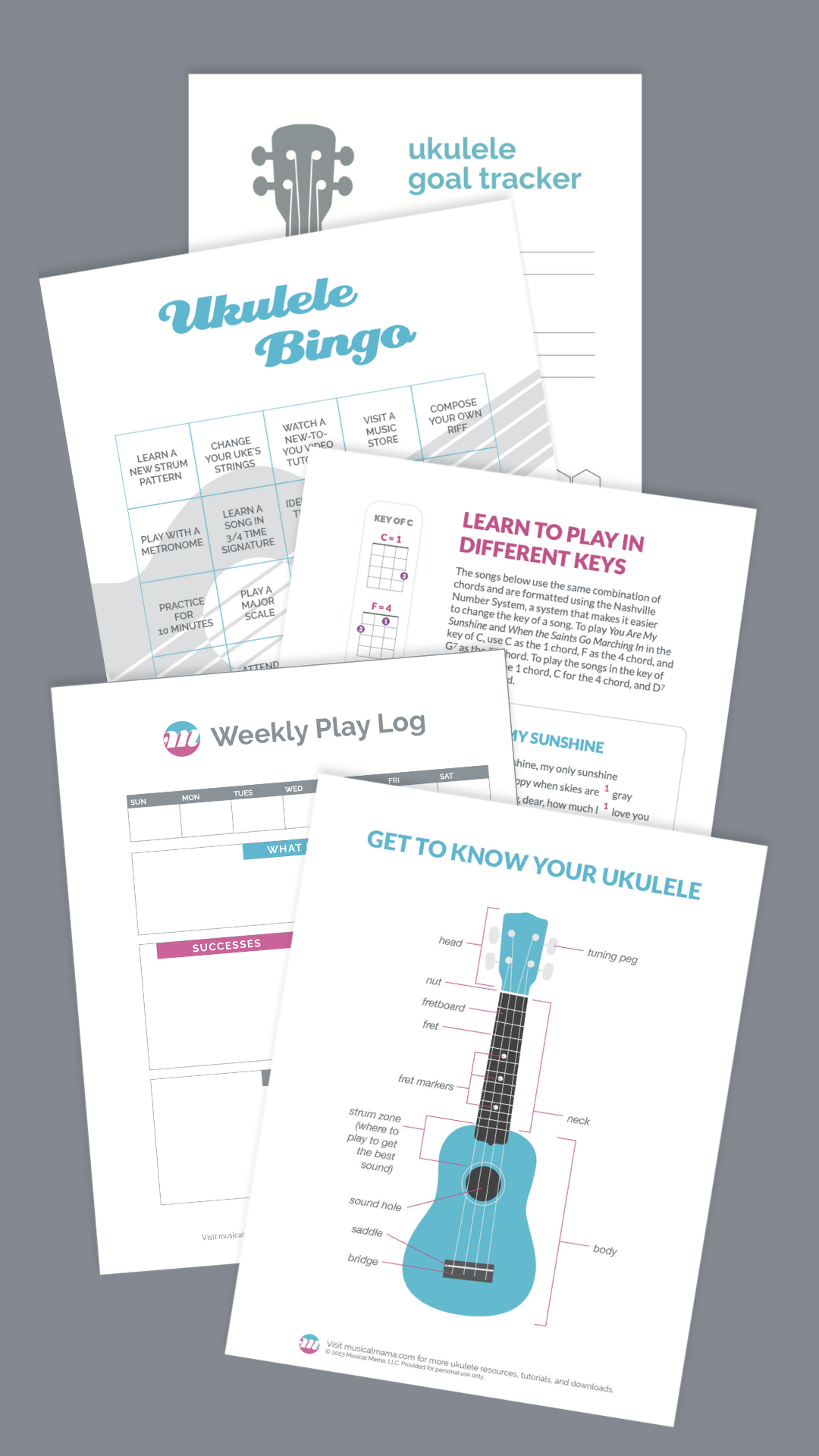Down in the Valley is a two-chord song in 3/4 time, so it's a great choice for experimenting with different waltz strums. And because the lyrics are so simple, you can probably memorize the first verse after playing it just a few times!
Read MoreWhat A Pick-up Note Is and What You Need to Know About It (with Video Tutorial)
Often times, we ukulele players start our musical journey by learning how to play a few songs with a basic down-up strum. Then we might learn a more complicated strum pattern only to find we’re having little trouble matching the strum to a song. Often times this is because a song has pickup notes. And the good news is that this is something you can make sense of even if you’ve never had a formal music lesson or learned any music theory before.
Read MoreEasy-to-Follow Play-Along Videos for Brand New Ukulele Players
Having a creative outlet is crucial in normal times, but during a pandemic it’s absolutely essential. The ukulele is the perfect option for many of us— it’s great for adults and kids alike, it has a beautiful sound, and it’s a relatively easy instrument to get started on. Learning anything new takes some commitment, but I’ve done my best to make learning to play the ukulele as simple as possible…
Read MoreLearn to Play the Ukulele with All the Videos from Let's Play! The Ukulele Handbook for Beginners!
Over the coming weeks, I'll be sharing all of the videos that accompany my book, Let's Play! The Ukulele Handbook for Beginners. I've done my best to replicate the experience of in-person lessons, and I break down each skill and song from the book into bite-sized steps to make learning to play the ukulele as easy as possible.
Read MoreThe Magic of Folk Music
I teach a beginner’s ukulele course in San Jose, CA, and while I do share modern popular music with my students, I primarily teach using well-known folk songs. I occasionally get asked why folk music???? — just like that, with a really big question mark at the end— and it seems that folk music has developed a reputation for being outdated and/or not very fun or interesting. That’s not the case! There’s a lot to love about folk music, and here I’m sharing four reasons why folk music is perfect for beginning musicians:
Read MoreHow to Strum Songs Set in 3/4 Time Signature (With Video Tutorial!)
This post excerpts content from Let’s Play! The Ukulele Handbook for Beginners.
Let’s begin by defining some basic music terms:
Time Signature
A symbol used in sheet music to indicate the number of beats per measure of music. A song’s time signature determines which strum patterns you can play.
Measure
One unit of music; one grouping of beats
4/4 Time Signature
The most common time signature for Western music. A song in 4/4 time has four beats per measure and is counted 1 - 2 - 3 - 4, 1 - 2 - 3 - 4 . . . 4/4 (“four-four”) time is also referred to as common time because it is the default time signature for pop, rock, R&B, hip-hop, country, folk, etc. 4/4 time is the time signature you are most accustomed to hearing and, as a beginning musician, it’s the time signature you are most likely to be playing.
3/4 Time Signature
The second most common time signature for Western music. A song in 3/4 time has three beats per measure and is counted 1 - 2 - 3, 1 - 2 - 3 . . . 3/4 (“three-four”) time signature is the second most popular time signature for Western music and is frequently referred to as waltz rhythm. When we play in 3/4 time, we count in groups of three (not four), meaning we must alter our strum to suit the rhythm.
In the following video, I play through three beginner waltz strums:
Your primary goal in making music is to maintain a steady beat. Start with variation A to create a nice, basic rhythm as you familiarize yourself with the new count. When you’re keeping a steady beat and appropriately managing your chord changes, give variations B and C a try.
One of my favorite things to do is simplify music theory to make it easier to understand, and I hope this post has helped simplify time signatures for some of you! If you’d like to learn more, check out my book, Let’s Play! The Ukulele Handbook for Beginners. Happy strumming!
Behind the Scenes: The Making of Let's Play! The Ukulele Handbook for Beginners
I first set out to write a how-to guide for the ukulele when I learned of loved ones— a sister-in-law in Pennsylvania, my BFF in Connecticut, and many others— who were interested in learning to play. I wanted a way to share my beginner’s ukulele course with people who lived outside of Silicon Valley. After two years of writing, editing, and designing, my book is a reality and I’m so thrilled to be able to share it with you!
My goal for Let’s Play! was to create a book that would be approachable for anyone, but especially people with very little or no previous musical experience. Take a peek inside, then read on to learn what steps I took to make the book as user-friendly as possible:
Read MoreThe Musical Mama Origin Story
At the time I’m writing this, my children are 7 and 5 and I have regained my sanity (my memory, not so much!). But when I was a new mom, life felt so much harder.
Read More




